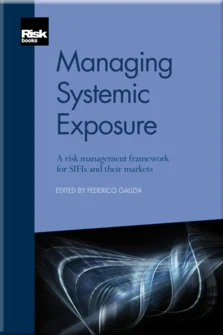Leverage: A Research Agenda for SIFIs
Jorge A. Chan-Lau, André O Santos, Liliana Schumacher, Karim Youssef, Luisa Zanforlin and Federico Galizia
Managing Systemic Exposure: A Risk Management Framework for SIFIs and their Markets
SIFIs and the Financial Crisis
Remuneration at Large Financial Services Firms
What Drives Banking Industry Ratings? An Empirical Analysis
Leverage: A Research Agenda for SIFIs
Bank Off-balance-sheet Leverage: Some Lessons from the Financial Crisis
Systemic Wrong-way Risk
The OTC Derivatives Market: Risks and Regulations
Balance Sheet Management for SIFIs
Managing Concentration Risk
Capital Adequacy Ratio: A Managerial Framework
Appendix: G-SIB Regulatory and Supervisory Regime
Leverage played a major role in the run up to the subprime lending crisis. Deposit- and non-deposit-taking financial institutions used leverage to progressively increase positions in risky assets. The trend was further magnified by rapid off-balance-sheet asset growth, often via vehicles that were highly leveraged and not consolidated. Financial innovations also played their part, with the creation of products with very high and little understood embedded leverage that significantly exposed these instruments and their investors to shifts in market sentiment and liquidity.
Deleveraging further magnified the initial shock once the crisis set in. Within the financial sector, banks tightened loan standards, cut costs, sold assets and raised capital – thereby reducing the supply of credit to the economy. The deleveraging process forced asset sales by non-bank financial intermediaries, thus further depressing the value of assets held within the financial sector. It applied to both domestic and cross-border positions, thus putting pressures on emerging market assets. The depressing effect on
Copyright Infopro Digital Limited. All rights reserved.
As outlined in our terms and conditions, https://www.infopro-digital.com/terms-and-conditions/subscriptions/ (point 2.4), printing is limited to a single copy.
If you would like to purchase additional rights please email info@risk.net
Copyright Infopro Digital Limited. All rights reserved.
You may share this content using our article tools. As outlined in our terms and conditions, https://www.infopro-digital.com/terms-and-conditions/subscriptions/ (clause 2.4), an Authorised User may only make one copy of the materials for their own personal use. You must also comply with the restrictions in clause 2.5.
If you would like to purchase additional rights please email info@risk.net











